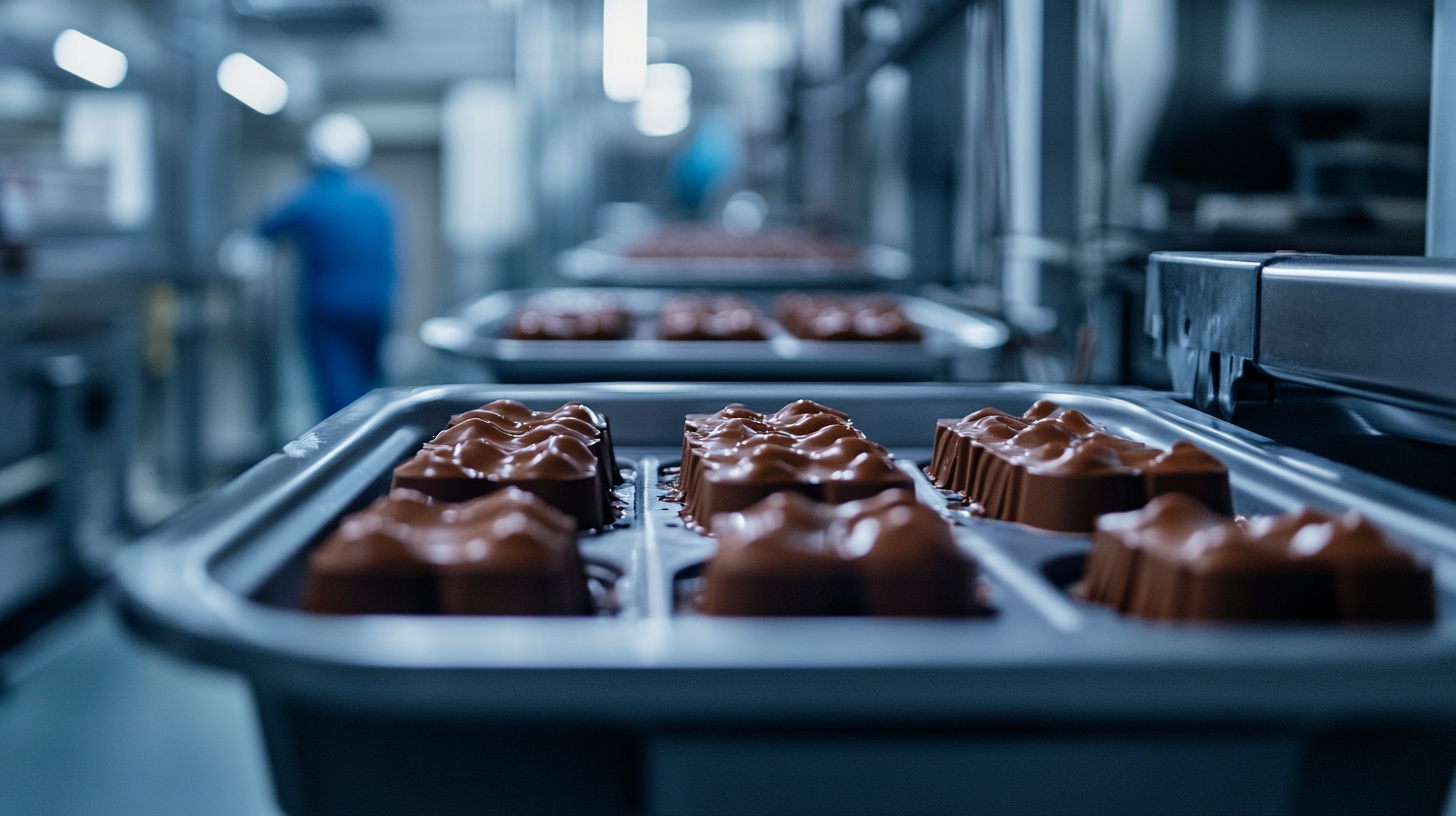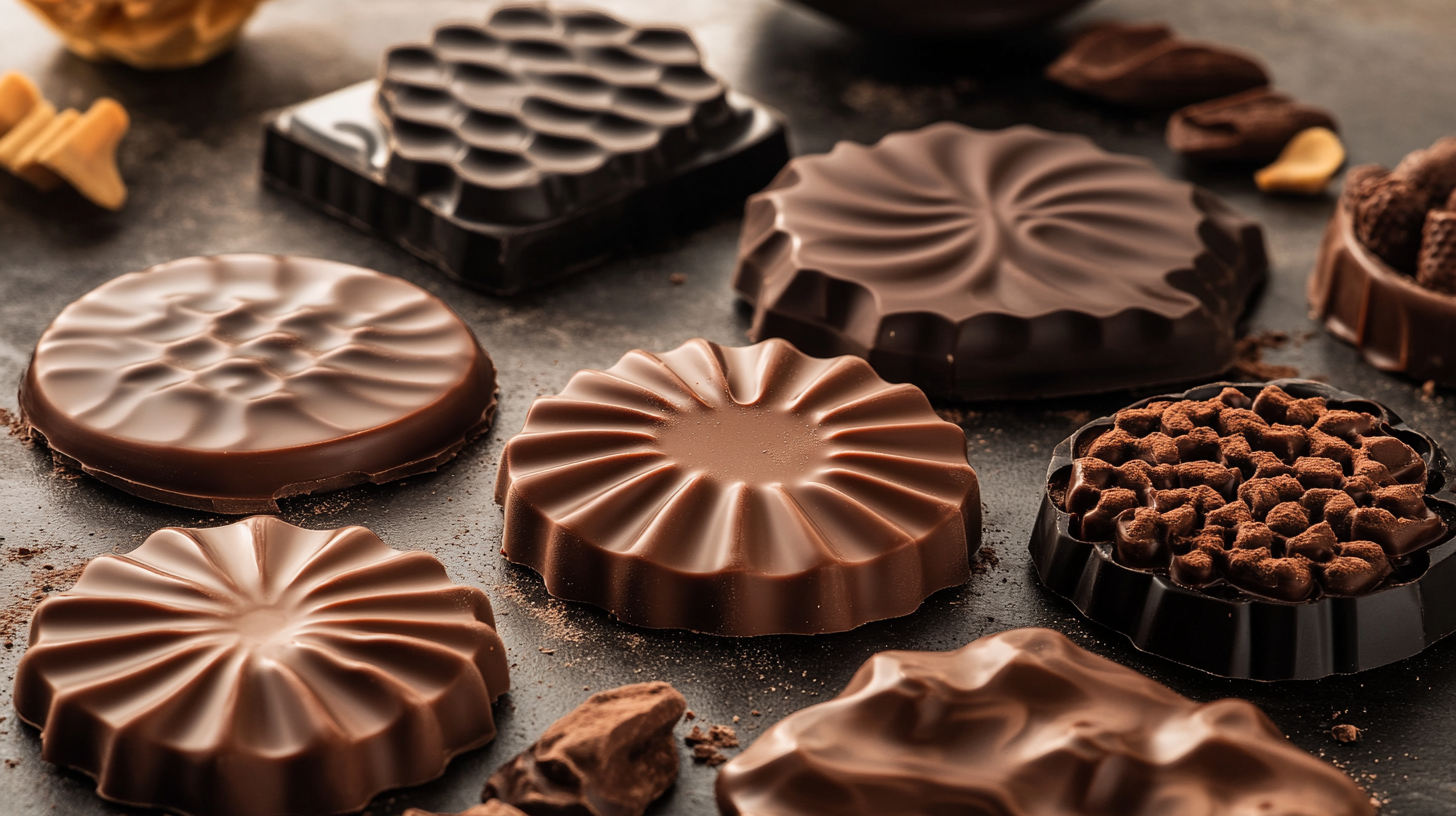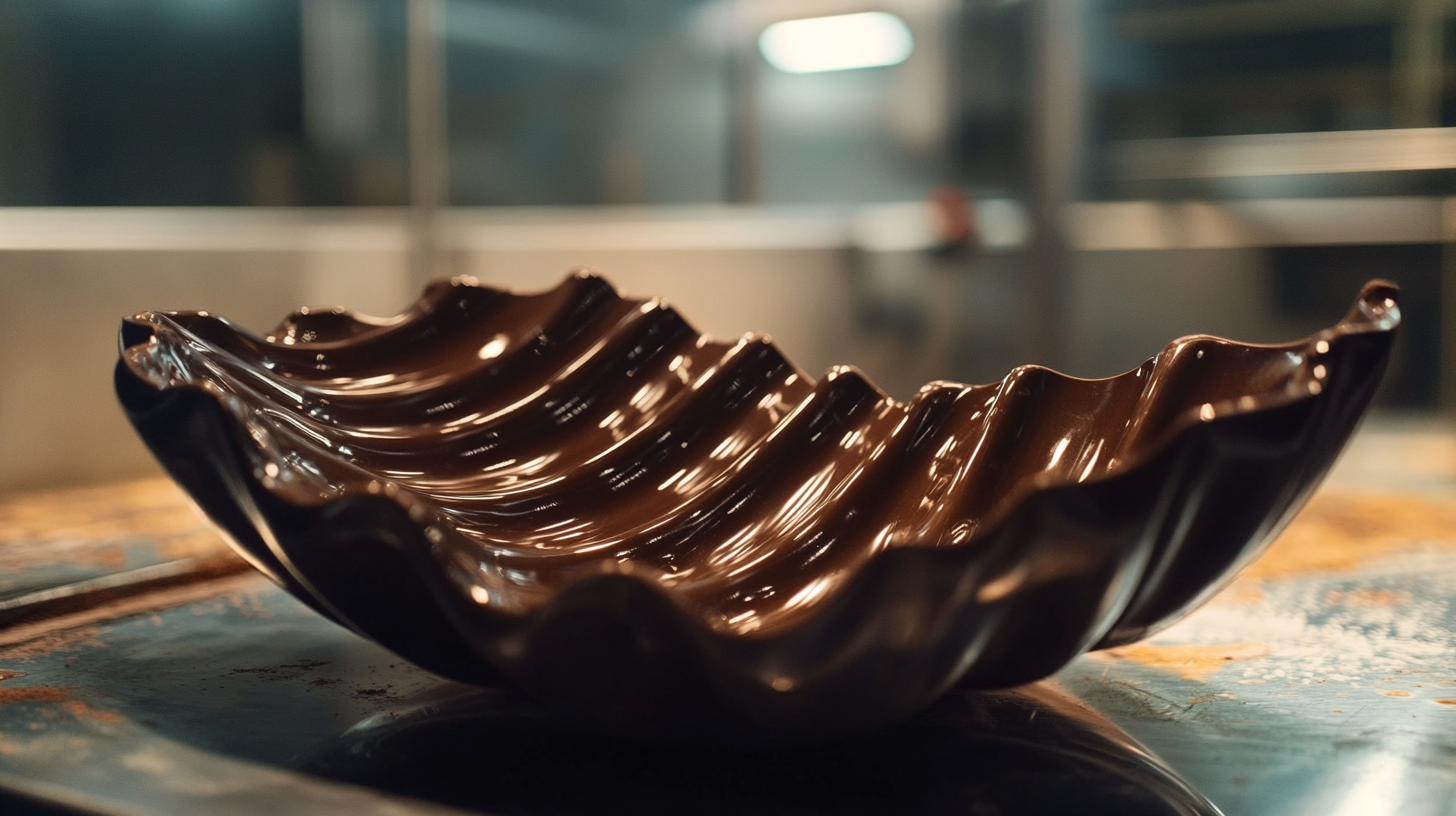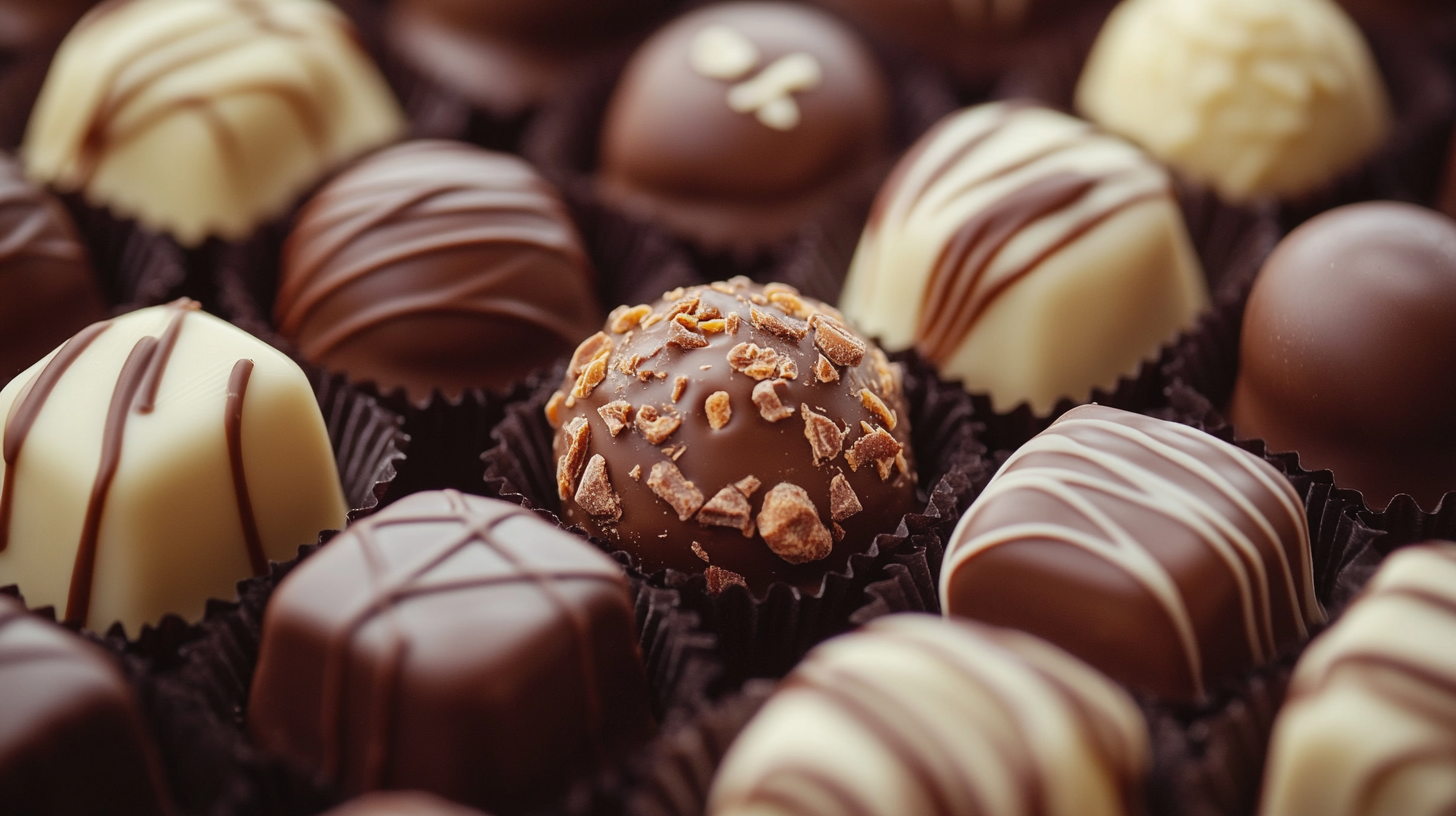As the confectionery industry continues to evolve, innovative techniques and tools are becoming paramount for success. Among these advancements, "Rotativa stampi per il cioccolato" stands out as a game-changer in chocolate production. These molds offer a range of possibilities, enabling chocolatiers to push the boundaries of creativity while maintaining exceptional quality. By exploring the myriad ways in which Rotativa chocolate molds are being utilized across the globe, we can gain insights into the future of confectionery and the artistry involved in crafting exquisite chocolate products.
In this blog, we will delve into the unique applications of Rotativa stampi per il cioccolato, showcasing how they are revolutionizing manufacturing processes and enhancing product design. From intricate shapes to mass production efficiencies, these molds are allowing confectioners to meet the growing demands of consumers while delivering eye-catching and delicious treats. Join us as we explore the innovative uses of these molds and their impact on the confectionery landscape worldwide.

The innovative design trends in rotativa chocolate molds are significantly shaping the global confectionery production landscape. As the world of chocolate continues to evolve, manufacturers are focusing on advanced mold designs that not only enhance aesthetics but also improve production efficiency. According to industry reports, the demand for specialized chocolate molds has seen a projected annual growth of 5.9% from 2021 to 2028, indicating a robust market response to innovation. One notable trend is the move towards customization in mold design. Manufacturers are increasingly adopting 3D printing technologies to create unique shapes and intricate details that were previously complicated to achieve. This shift not only allows for greater creativity but also ensures a more personalized product offering, catering to consumers' growing desire for unique and artisanal chocolates. Research suggests that 61% of consumers are willing to pay more for products that offer unique personalization, prompting confectioners to innovate in their molding processes. Moreover, sustainability is playing a crucial role in the design of rotativa chocolate molds. Eco-friendly materials are gaining traction as manufacturers seek to reduce their environmental footprint. Reports have indicated that approximately 70% of confectionery producers are investing in sustainable practices, including the use of biodegradable materials in their molds. This trend reflects a broader movement towards sustainability in the food industry, driven by consumer demand for environmentally responsible products. In conclusion, the current trends in rotativa chocolate mold design are paving the way for a more dynamic and responsive confectionery market. By embracing customization, technological advancements, and sustainability, producers are not only enhancing product quality but also meeting the evolving expectations of modern consumers.

The chocolate industry is facing unprecedented challenges, largely due to the rising costs associated with cocoa production and the imposition of new tariffs. These changes have caused significant disruptions in supply chains, resulting in increased expenses that impact both manufacturers and consumers. In this turbulent environment, innovative technologies like Rotativa chocolate molds offer a glimmer of hope for enhancing production efficiency and helping businesses navigate these challenges.
Rotativa technology allows for faster and more consistent chocolate manufacturing, significantly reducing waste and maximizing output. By streamlining the molding process, confectionery producers can maintain high-quality standards while coping with rising cocoa prices. This efficiency is essential when faced with the dual pressures of limited global supply, attributed to low pollination rates and extreme weather conditions, which threaten cocoa crops worldwide.
Furthermore, implementing Rotativa molds can minimize labor costs and production time, making them a strategic investment for chocolate producers. As the industry continues to grapple with fluctuating costs, those who adapt to innovative production practices will position themselves better to thrive amidst the affordability crisis. Embracing such advancements not only safeguards profitability but also ensures that consumers continue to enjoy their beloved chocolate treats, even in challenging economic climates.

The confectionery industry is always on the lookout for innovative techniques to elevate their creations, and Rotativa chocolate molds have emerged as a game changer. These molds not only provide an array of shapes and designs but also open the door to exciting flavor combinations. Utilizing these molds, confectioners can experiment with flavors that push the boundaries of traditional chocolate, offering consumers unique and delectable experiences.
Taking a cue from global culinary trends, the fusion of unexpected flavors in confectionery is gaining traction. By incorporating savory ingredients or the latest flavor trends—like the tangy zest of citrus combined with rich dark chocolate—confectioners can create products that surprise and delight. This creativity mirrors the recent initiatives from major brands, such as McDonald’s China, which is encouraging innovative combinations through their nutrition information release. By inviting customers to submit their own calorie-conscious creations, they're fostering a culture of creativity that aligns closely with the imaginative spirit seen in the confectionery sector.
Rotativa molds facilitate these innovative combinations by allowing artisans to experiment more freely with shapes and fillings. Imagine a chocolate mold shaped like a traditional dumpling, filled with a blend of chocolate, spiced fruit paste, and nut butter. Such imaginative designs not only entice consumers with their visual appeal but also offer a symphony of flavors that engage the palate in novel ways. As confectionery professionals continue to explore these creative avenues, the results could set new standards for taste and presentation in the sweets market.

In the dynamic world of confectionery production, Rotativa chocolate molds are making waves as brands seek innovative ways to enhance their product offerings. Several renowned companies have successfully integrated these molds into their manufacturing processes, showcasing the versatility and efficiency they bring to chocolate crafting. For instance, a leading chocolate brand, known for its premium pralines, has adopted Rotativa molds to streamline their production line. This innovation allows them to produce intricate designs at a higher speed while maintaining the high-quality standards their customers expect.
Another fascinating case study involves a boutique chocolatier specializing in seasonal treats. By incorporating Rotativa molds, they were able to create unique, limited-edition chocolates that not only captured the essence of the holidays but also drove customer engagement. The ability to easily switch molds for different themes helped this brand maintain a fresh and exciting product lineup throughout the year, significantly boosting sales during peak seasons.
Furthermore, an international candy manufacturer utilized Rotativa chocolate molds in developing a new line of filled chocolates. This approach not only enhanced the aesthetic appeal but also improved production efficiency, allowing them to meet increasing consumer demand. The successful implementation of these molds highlights a trend among confectionery brands toward adopting cutting-edge technologies that yield both creative and commercial benefits.
In recent years, sustainability has become an increasingly critical focus within the confectionery industry, particularly in the production of Rotativa chocolate molds. As global demand for environmentally friendly practices grows, manufacturers are adopting innovative strategies to minimize their ecological footprint. By incorporating sustainable materials and eco-efficient processes, these companies not only enhance the quality of their products but also contribute positively to the environment.
A notable trend in this sector is the alignment with broader sustainability standards, such as the recent sustainability disclosure standards released in China. These standards aim to promote transparency and accountability within corporate practices, encouraging manufacturers to disclose their environmental impact. Adopting such frameworks not only strengthens the industry's commitment to sustainability but also sets the stage for better collaboration between global partners in meeting sustainability goals.
Moreover, lessons from other sectors, such as the transformative high-speed rail projects in California, demonstrate the potential economic and environmental benefits of investing in sustainable infrastructures. The confectionery industry can take cues from these initiatives, exploring how to integrate sustainability into their operations effectively. This shift is vital for not only meeting consumer demands but also fostering a more sustainable future for the confectionery market worldwide.
Utilizziamo i cookie per migliorare l'esperienza utente. Per maggiori informazioni, consulta la nostra Cookie Policy.